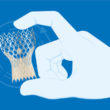Despite stroke rate has declined since the early days of transcatheter aortic valve replacement (TAVR), it remains significant, reaching 1% to 3% 30 days after procedure. Since TAVR has seen a progressive expansion to the low risk and young populations, identifying risk factors in patient selection and management is crucial for us to prevent stroke. <a href="https://solaci.org/en/2023/10/20/observant-ii-post-tavr-30-day-and-6-month-stroke-predictors/" title="Read more" >...</a>
Cause of Cardiac Death after TAVR at Present
Cardiac failure (CF) and sudden cardiac death (SCD) stand out as two of the main causes of death in patients with aortic stenosis. Although transcatheter aortic valve intervention has shown higher survival, these two continue to be the main conditions leading to patient death at followup. In its early days, TAVR also showed benefits, but<a href="https://solaci.org/en/2023/10/11/cause-of-cardiac-death-after-tavr-at-present/" title="Read more" >...</a>
TAVR in Asymptomatic or Minimally Symptomatic Patients: 30-Day Results
Aortic valve replacement (AVR) is recommended for symptomatic aortic stenosis (AS), while close monitoring is the advised strategy for asymptomatic patients, unless they have elevated aortic gradients, reduced ejection fraction, or abnormal stress tests. However, the optimal timing for AVR remains uncertain, especially in light of recent evidence suggesting that AS patients showing signs of<a href="https://solaci.org/en/2023/10/06/tavr-in-asymptomatic-or-minimally-symptomatic-patients-30-day-results/" title="Read more" >...</a>
MITRAL Trial, Results at 5 Years
Repeat mitral valve repair has been associated with increased mortality. Transcatheter mitral valve repair has surged as an alternative for patients treated with mitral valve-in-valve (MViV), valve-in-ring (MViR), or valve-in-mitral for annular calcification (ViMAC). Current data from the VIVID and the MAC Global Registry on 30-day evolution in these 3 scenarios show 7.4%, 11.4% and<a href="https://solaci.org/en/2023/10/04/mitral-trial-results-at-5-years/" title="Read more" >...</a>
TriClip: Good Outcomes After a 2-Year Follow-up
Severe tricuspid regurgitation (TR) is an underestimated condition in healthcare systems. However, it is more common than believed, especially in individuals over 65 years of age. This condition is linked to hospitalizations due to heart failure, mortality rates, and a progressive decline in quality of life. Surgery to treat TR on its own is complicated,<a href="https://solaci.org/en/2023/10/04/triclip-good-outcomes-after-a-2-year-follow-up/" title="Read more" >...</a>
MIL Train More MIL – Day 5: Sanatorio Anchorena
The program MIL Training More MIL continues in specialized centers in Buenos Aires. Las Friday the chosen site was Anchorena Clinic. On this last day of training participants saw a TAVR case with Evolut PRO and reviewed several TAVR cases with small annuli, as well as several canned cases of aortic valve implantation with ACURATE<a href="https://solaci.org/en/2023/10/03/mil-train-more-mil-day-5-sanatorio-anchorena/" title="Read more" >...</a>
MIL Training More MIL: Training Session at ICBA!
The scholarship program MIL Training More MIL continues at specialized centers in Buenos Aires. Yesterday, (Tuesday 26/09), selected female interventionists attended the Cardiovascular Institute of Buenos Aires (ICBA), where an intense session on structural heart disease took place. There were 2 live cases on bicuspid valve and complex access, transfemoral and trans-iliac respectively, both with<a href="https://solaci.org/en/2023/09/28/mil-training-more-mil-training-session-at-icba/" title="Read more" >...</a>
MIL Train More MIL: The Second Week of Training Has Started!
The second group of Women Interventionists sponsored by SOLACI has started the training on structural disease as part of our scholarship program at the Instituto Cardiovascular de Rosario (ICR). The program will take place over the course of this week in different centers across Argentina. During the session, the grant holders were able to attend<a href="https://solaci.org/en/2023/09/27/mil-train-more-mil-the-second-week-of-training-has-started/" title="Read more" >...</a>
TRILUMINATE Two Years In: Encouraging Results
Tricuspid valve regurgitation is more common than one might think. It often stems from left valve disease and associated with increased mortality and hospitalization due to heart failure, which is not easy to treat. Currently, guidelines list surgery as the recommended treatment, though this option is quite complex and might entail complications and mortality risk.<a href="https://solaci.org/en/2023/09/19/triluminate-two-years-in-encouraging-results/" title="Read more" >...</a>
Is Complete Revascularization Really Necessary after AMI in the Elderly?
The population over 75 is growing gradually, which entails an increase in acute myocardial infarction (AMI) in this group. As we all know, it is fairly common for AMI to present with multivessel disease. It has been shown that younger patients will benefit from complete revascularization vs. a simple resolution of the culprit vessel. However,<a href="https://solaci.org/en/2023/09/13/is-complete-revascularization-really-necessary-after-ami-in-the-elderly/" title="Read more" >...</a>








